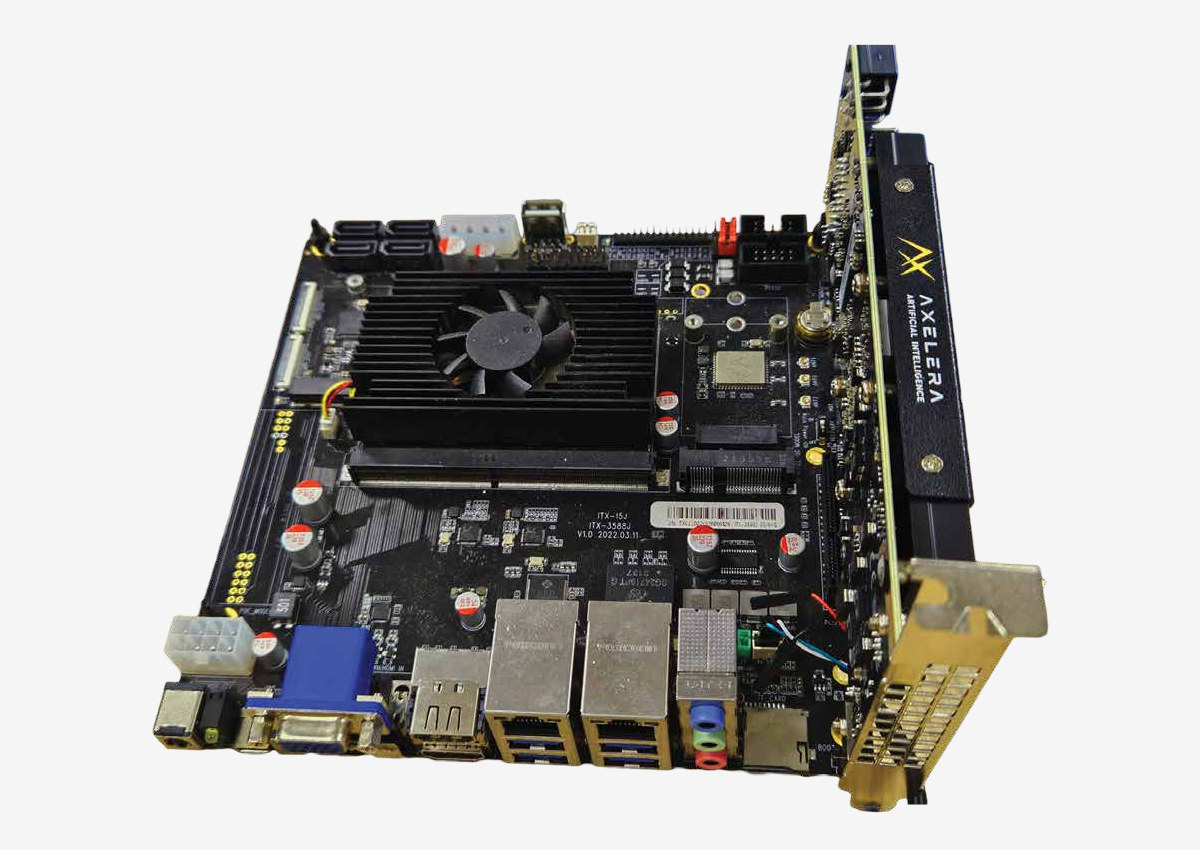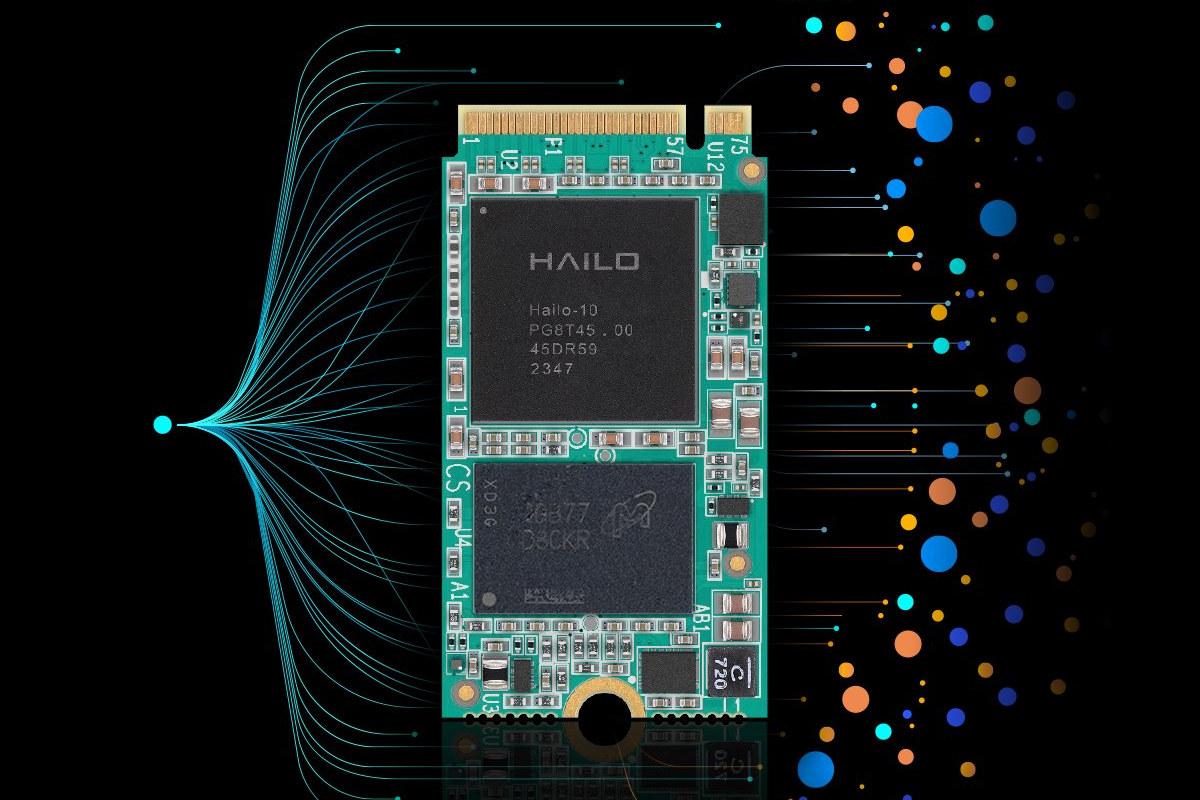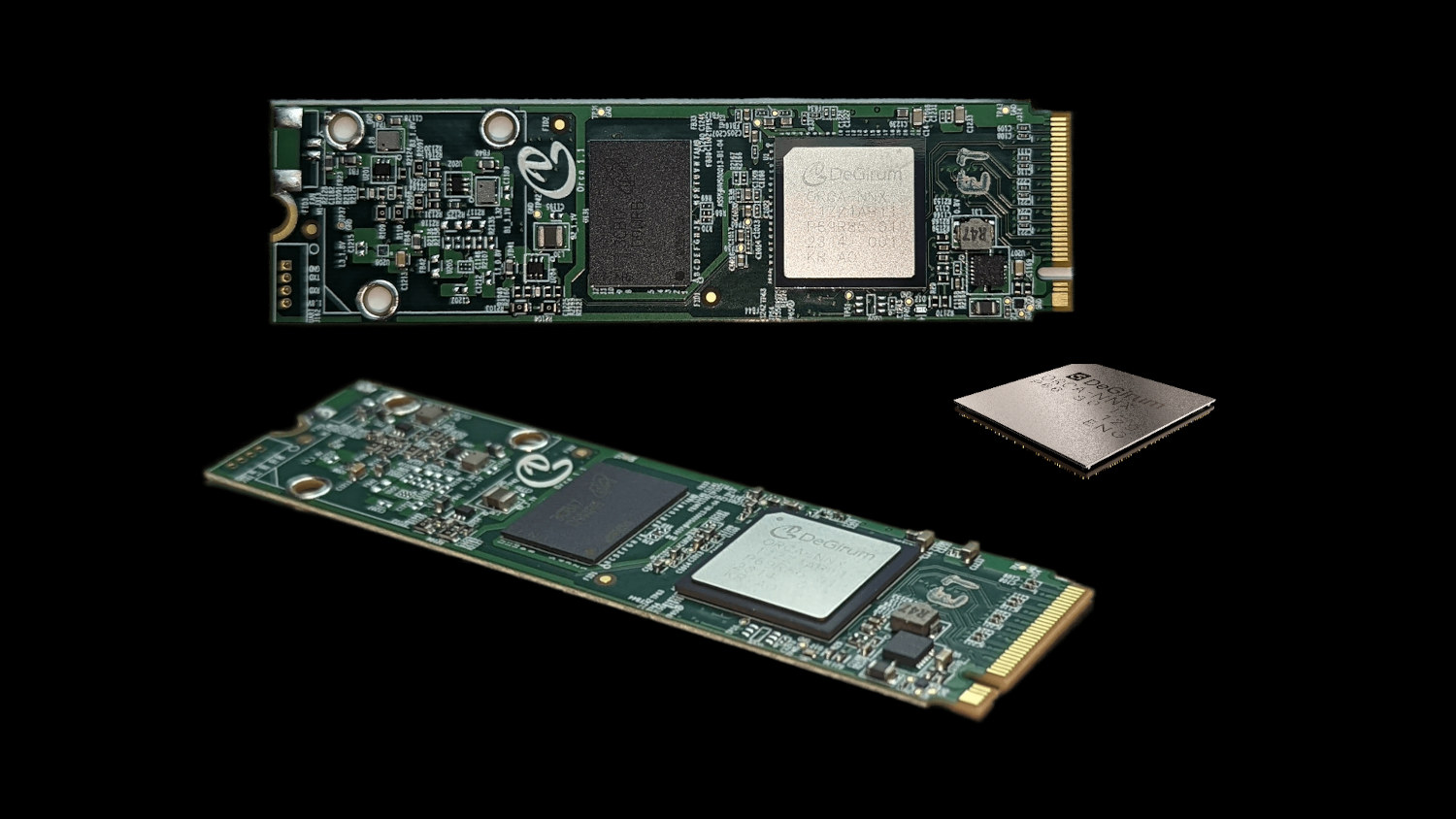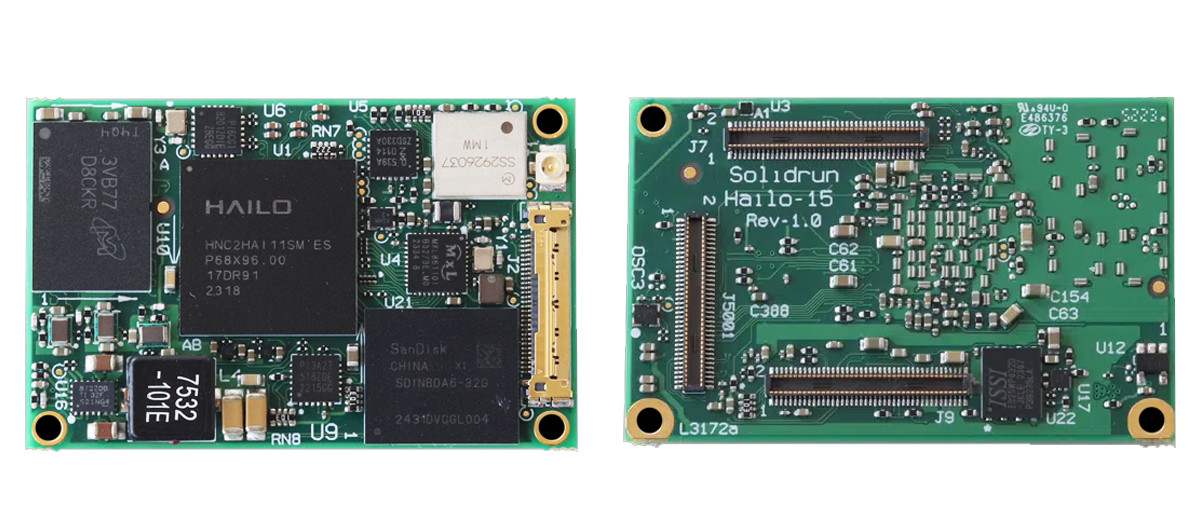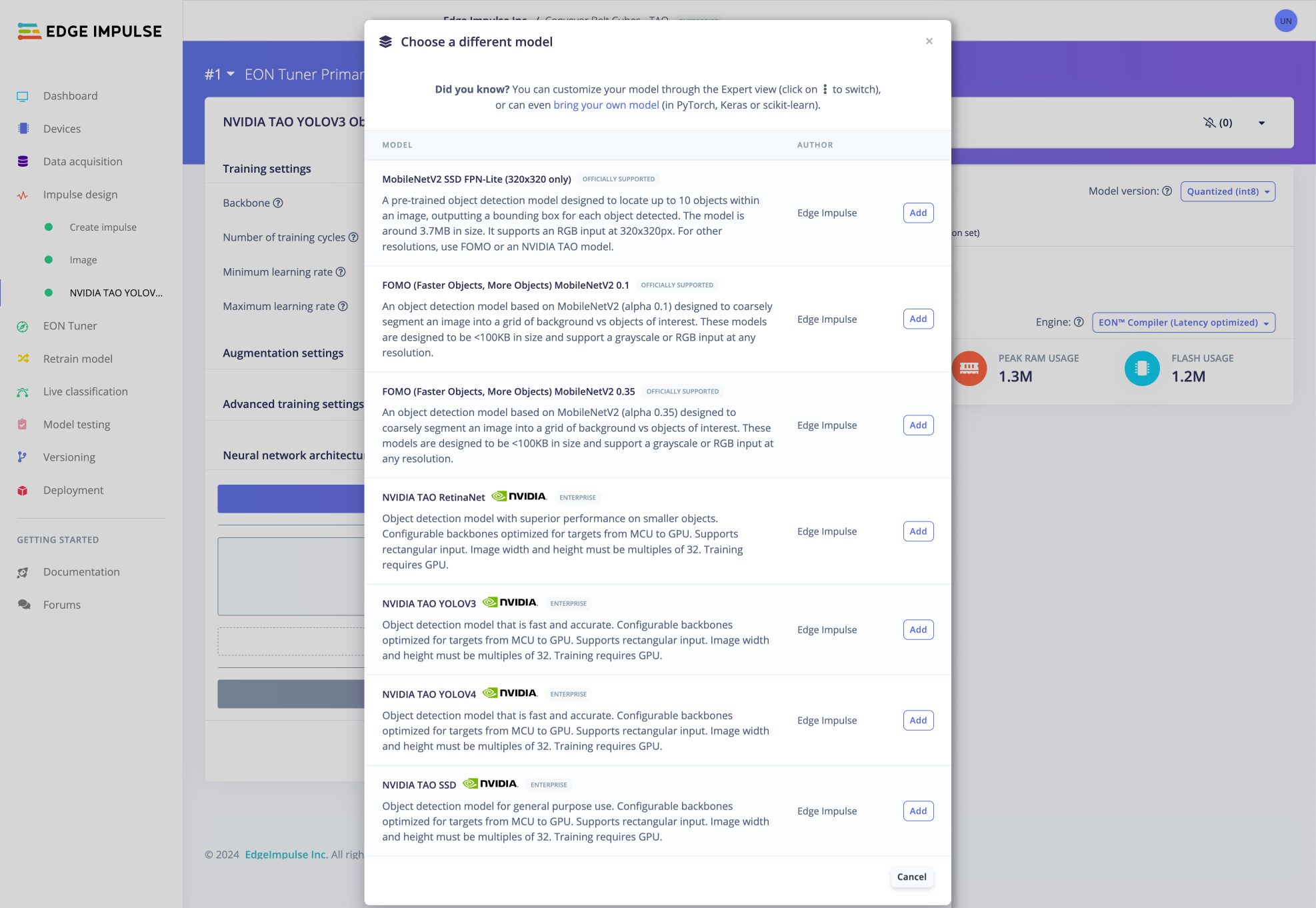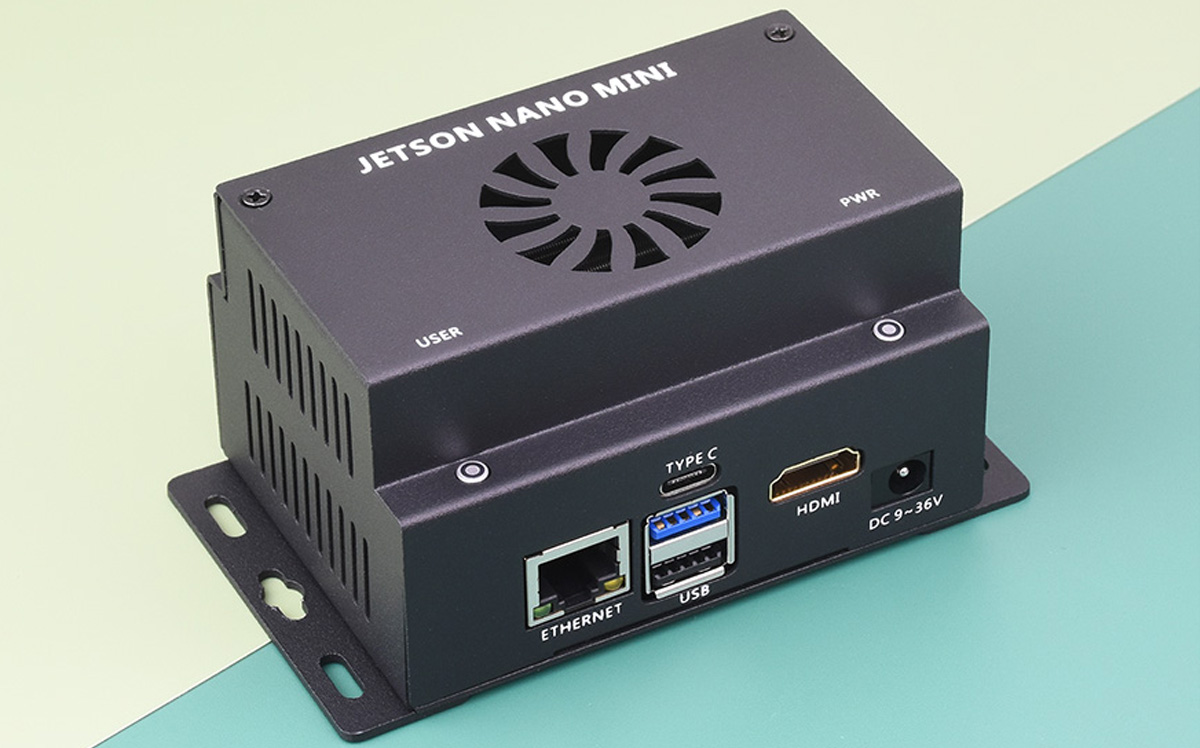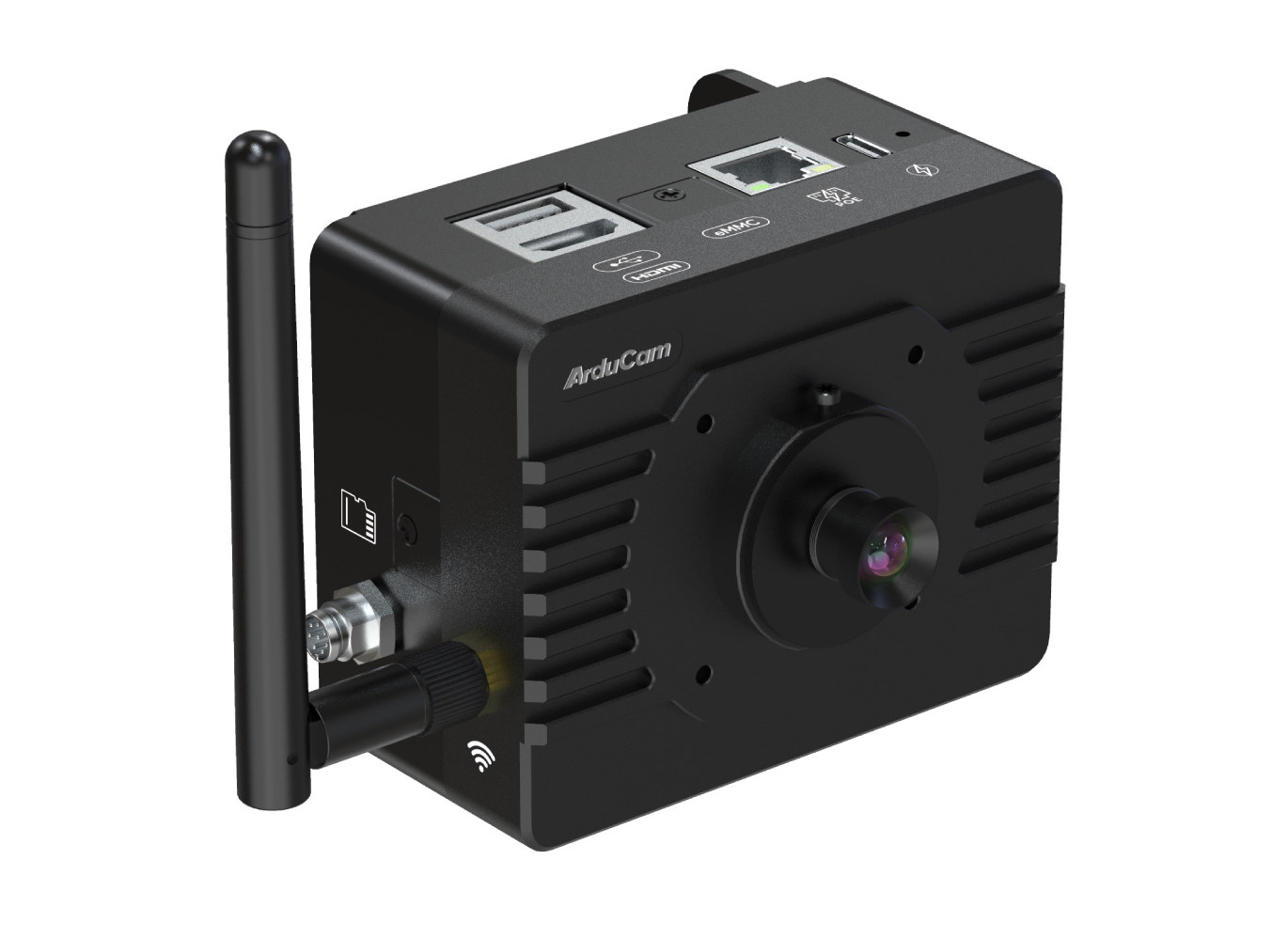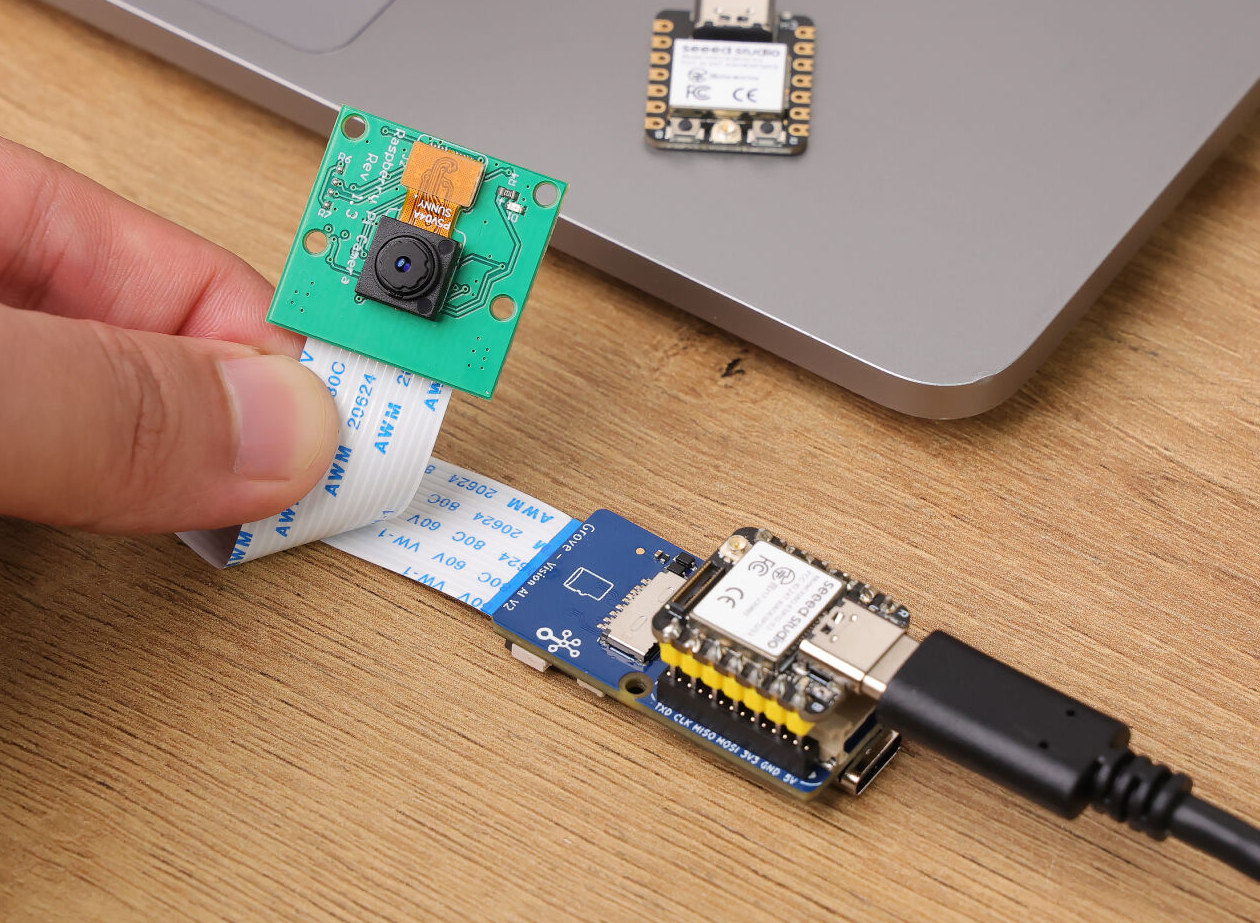Axelera has announced the general availability of several Metis PCIe AI Evaluation Kits that combine the company’s 214 TOPS Metis AIPU PCIe card with x86 platforms such as Dell 3460XE workstation and Lenovo ThinkStation P360 Ultra computers, Advantech MIC-770v3 or ARC-3534 industrial PCs, or the Firefly ITX-3588J mini-ITX motherboard powered by a Rockchip RK3588 octa-core Cortex-A76/A55 SoC. We’ll look into detail about the latter in this post. When Axelera introduced the Metis Axelera M.2 AI accelerator module in January 2023 I was both impressed and doubtful of the performance claims of the company since packing a 214 TOPS Metis AIPU in a power-limited M.2 module seemed like a challenge. But it was hard to check independently since the devkits were not available yet although the company only started their early-access program in August last year. Now, anybody with an 899 Euros and up budget can try out their larger Metis […]
Hailo-10 M.2 Key-M module brings Generative AI to the edge with up to 40 TOPS of performance
Hailo-10 is a new M.2 Key-M module that brings Generative AI capabilities to the edge with up to 40 TOPS of performance at low power. It targets AI PCs supporting only the Windows 11 operating system on x86 or Aarch64 targets at this time. Hailo claims the Hailo-10 is faster and more energy efficient than integrated neural processing unit (NPU) solutions found in Intel SoCs and delivers at least twice the performance at half the power of Intel’s Core Ultra “AI Boost” NPU. Hailo-10 module specifications: AI accelerator – Hailo-10H System Memory – 8GB LPDDR4 on module Host interface – 4-lane PCIe Gen 3 Power consumption – Less than 3.5W (typical) for the chip Form factor – M.2 Key M 2242 / 2280 Supported AI frameworks – TensorFlow, TensorFlow Lite, Keras, PyTorch & ONNX The Hailo-10 can run Llama2-7B with up to 10 tokens per second (TPS) at under 5W […]
DeGirum ORCA M.2 and USB Edge AI accelerators support Tensorflow Lite and ONNX model formats
I’ve just come across an Atom-based Edge AI server offered with a range of AI accelerator modules namely the Hailo-8, Blaize P1600, Degirum ORCA, and MemryX MX3. I had never heard about the last two, and we may cover the MemryX module a little later, but today, I’ll have a closer at the Degirum ORCA chip and M.2 PCIe module. The DeGirum ORCA is offered as an ASIC, an M.2 2242 or 2280 PCIe module, or (soon) a USB module and supports TensorFlow Lite and ONNX model formats and INT8 and Float32 ML precision. They were announced in September 2023, and have already been tested in a range of mini PCs and embedded box PCs from Intel (NUC), AAEON, GIGABYTE, BESSTAR, and Seeed Studio (reComputer). DeGirum ORCA specifications: Supported ML Model Formats – ONNX, TFLite Supported ML Model Precision – Float32, Int8 DRAM Interface – Optional 1GB, 2GB, or 4GB […]
SolidRun launches Hailo-15 SOM with up to 20 TOPS AI vision processor
In March last year, we saw Hailo introduce their quad-core Cortex-A53-based Hailo-15 AI Vision processor. The processor features an advanced computer vision engine and can deliver up to 20 TOPS of processing power. However, after that initial release, we didn’t find it in any commercial products with the SoC. But in a recent development, SolidRun has released a SOM that not only features the Hailo-15 SoC but also integrates up to 8GB LPDDR4 RAM and 256GB eMMC storage along with dual camera support with H.265/4 Video Encoder. This is not the first SOM that SolidRun has released. Previously, we wrote about the SolidRun RZ/G2LC SOM, and before that, SolidRun launched the LX2-Lite SOM along with the ClearFog LX2-Lite dev board. Last month, they released their first COM Express module based on the Ryzen V3000 Series APU. Specification of SolidRun’s Hailo-15 SOM: SoC – Hailo-15 with 4 x Cortex A53 @ 1.3GHz; […]
Edge Impulse machine learning platform adds support for NVIDIA TAO Toolkit and Omniverse
Edge Impulse machine learning platform for edge devices has released a new suite of tools developed on NVIDIA TAO Toolkit and Omniverse that brings new AI models to entry-level hardware based on Arm Cortex-A processors, Arm Cortex-M microcontrollers, or Arm Ethos-U NPUs. By combining Edge Impulse and NVIDIA TAO Toolkit, engineers can create computer vision models that can be deployed to edge-optimized hardware such as NXP I.MX RT1170, Alif E3, STMicro STM32H747AI, and Renesas CK-RA8D1. The Edge Impulse platform allows users to provide their own custom data with GPU-trained NVIDIA TAO models such as YOLO and RetinaNet, and optimize them for deployment on edge devices with or without AI accelerators. NVIDIA and Edge Impulse claim this new solution enables the deployment of large-scale NVIDIA models to Arm-based devices, and right now the following object detection and image classification tasks are available: RetinaNet, YOLOv3, YOLOv4, SSD, and image classification. You can […]
Waveshare Jetson Nano powered mini-computer features a sturdy metal case
Waveshare has launched the Jetson Nano Mini Kit A, a mini-computer kit powered by Jetson Nano. This kit features the Jetson Nano Module, a cooling fan, and a WiFi module, all inside a sturdy metal case. The mini-computer is built around Nvidia’s Jetson platform housing the Jetson Nano module and features multiple interfaces, including USB connectors, an Ethernet port, an HDMI port, CSI, GPIO, I2C, and RS485 interfaces. It also has an onboard M.2 B KEY slot for installing either a WiFi or 4G module and is compatible with TensorFlow, and PyTorch which makes it well-suited for various AI applications. Waveshare Mini-Computer Specification: GPU – NVIDIA Maxwell architecture with 128 NVIDIA CUDA cores CPU – Quad-core ARM Cortex-A57 processor @ 1.43 GHz Memory – 4 GB 64-bit LPDDR4 1600 MHz; 25.6 GB/s bandwidth Storage – 16 GB eMMC 5.1 Flash Storage, microSD Card Slot Display Output – HDMI interface with […]
Arducam KingKong – A Raspberry Pi CM4-based Edge AI camera with global shutter sensor, Myriad X AI accelerator
ArduCam KingKong is a Smart Edge AI camera based on the Raspberry Pi CM4 and system-on-module based on Intel Myriad X AI accelerator that follows the Raspberry Pi 5-powered Arducam PiINSIGHT camera introduced at the beginning of the year. The new product launch aims to provide a complete Raspberry Pi-based camera rather than an accessory for the Raspberry Pi 4/5. Smart cameras built around the Raspberry Pi CM4 are not new as we previously covered the EDATEC ED-AIC2020 IP67-rated industrial AI Edge camera and the StereoPi v2 stereoscopic camera used to create 3D video and 3D depth maps. The ArduCam KingKong adds another option suitable for computer vision applications with an AR0234 global shutter module, PoE support, and a CNC metal enclosure. ArduCam KingKong specifications: SoM – Raspberry Pi Compute Module 4 (CM4) by default CM4104000 Wireless 4GB RAM Lite (0GB eMMC). AI accelerator – Luxonis OAK SOM BW1099 based on Intel […]
$16 Grove Vision AI V2 module features WiseEye2 HX6538 Arm Cortex-M55 & Ethos-U55 AI microcontroller
Seeed Studio’s Grove Vision AI V2 module is based on the HiMax WiseEye2 HX6538 dual-core Cortex-M55 AI microcontroller with an Arm Ethos-U55 microNPU and features a MIPI CSI connector for an OV5647 camera. It is designed for AI computer vision applications using TensorFlow and PyTorch frameworks and connects to hosts such as Raspberry Pi SBCs, ESP32 IoT boards, Arduino, and other maker boards over I2C. We tested the previous generation Grove Vision AI module based on the 400 MHz HX6537-A DSP-based AI accelerator using the SenseCAP K1100 sensor prototype kit with LoRaWAN connectivity, and managed to have the kit perform face detection and send the data over LoRaWAN. The Grove Vision AI V2 builds on that but with a modern Arm MCU core and more powerful AI accelerator that can run models such as Mobilenet V1/V2, Efficientnet-lite, and Yolo v5 & v8 using the SenseCraft low-code/no-code platform. Grove Vision AI […]


